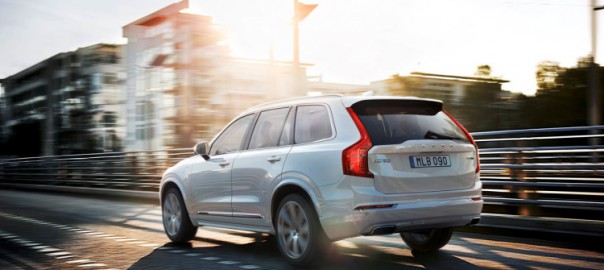Volvo XC90 T8 hybrid runs 0-62 in 5.9 seconds, will get 59 MPGe
Volvo has shown us the new XC90. It’s even shown us its new every-trick-in-the-book twin-charged hybrid powertrain. It just hasn’t shown the two together… that is, until now.
Although the High Performance Drive-E Powertrain prototype it showcased a couple of months ago was rated as high as 450 horsepower, the production version that will power the flagship XC90 T8 has now been confirmed to produce 400 hp and 472 pound-feet of torque. That’s still pretty damn good – especially from a four-cylinder engine – and is now quoted to propel the big crossover from 0-62 miles per hour in 5.9 seconds.
That’s not bad for a four-cylinder crossover, but if you’re wondering how it stacks up against the competition – well, there isn’t much to speak of. The only other luxury three-row crossover currently on the market is the Infiniti QX60 Hybrid, which doesn’t plug in and offers only 250 hp and 243 lb-ft of torque and takes a good eight seconds to reach highway cruise. (Other luxury hybrid crossovers like the Porsche Cayenne, VW Touareg, Audi Q5, Lexus RX only offer five seats.)
To match the Volvo’s performance in a Mercedes GL, for comparison’s sake, you’d have to go up to the twin-turbo V8-powered GL550, which just edges out the XC90 T8 with 429 hp, 516 lb-ft and a 5.5-second 0-60 time. (One step down, the six-cylinder twin-turbo GL450 offers significantly less with 362 hp, 369 lb-ft and a 6.6-second sprint.) But the Volvo offers pure electric mode that’ll get you 25 miles down the road before firing up the internal-combustion engine.
Gothenburg is estimating that we can expect around 59 MPGe, still to be confirmed, from the XC90 T8, but that is using the lenient European NEDC testing method. Interestingly, Volvo is also quoting an emissions figure of 59 grams of CO2 per km (NEDC), which would be roughly 92 MPGe. We’ve asked Volvo for a clarification. Either one will easily make the XC90 the cleanest crossover on the market, at least until the Tesla Model X arrives in late 2015.
Source: Autoblog
